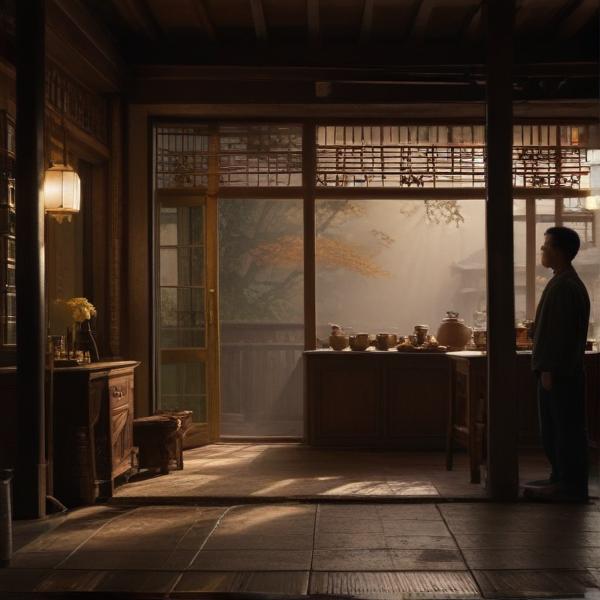基本信息 (Basic Information)
含义与用法 (Meanings & Usage)
中文核心释义 (Core Chinese Meaning): 一种美丽的有光泽的矿石或玻璃,多指“琉璃”,即古代用以制作器具、饰品的有色玻璃。
英文核心释义 (Core English Meaning): a beautiful, glossy mineral or glass; often refers to 'liúlí', the colored glass used in ancient Chinese artifacts and ornaments
象形意义 / 为何这么写 (Pictographic Meaning / Writing Rationale)
文言文释义 (Classical Chinese Meaning)
与现代意义相近,主要指有色玻璃或美玉类宝石。Similar to modern meaning, mainly referring to colored glass or gemstone similar to jade.
深入学习 (In-depth Study)
字源故事 (Origin Story)
字形演变 (Character Evolution)
常用词语和例句 (Common Words & Examples)
琉璃 (colored glaze; ancient Chinese colored glass used for ornaments and architecture)
故宫屋顶铺满了黄色的琉璃瓦。
Eng: The roofs of the Forbidden City are covered with yellow glazed tiles.
琉球 (Ryukyu (islands); historical Chinese name for the Ryukyu Islands)
琉球群岛位于中国东南部的海域。
Eng: The Ryukyu Islands are located in the southeast sea area of China.
相关成语 (Related Idioms)
相关成语信息待补充。Related idiom information pending.
多语言翻译 (核心释义) (Translations (Core Meaning))
- French: verre coloré, émail (souvent dans 'liuli' : verrerie chinoise ancienne)
- German: farbiges Glas, Glasur (meist in 'Liuli', chinesisches Altglas)
- Spanish: vidrio coloreado, esmalte (especialmente en 'liúlí', vidrio antiguo chino)
- Italian: vetro colorato, smalto (soprattutto in 'liúlí', vetro antico cinese)
- Portuguese: vidro colorido, esmalte (geralmente em 'liúlí', vidro chinês antigo)
- Russian: цветное стекло, глазурь (обычно в 'liuli', древнее китайское стекло)
- Arabic: زجاج ملون، مينا (غالبًا في 'liuli' الزجاج الصيني القديم)
- Persian: شیشه رنگی، مینای چینی (معمولاً در 'لیولی'، شیشه سنتی چینی)
- Dutch: gekleurd glas, glazuur (meestal in 'liuli', oud Chinees glas)
- Polish: kolorowe szkło, emalia (często w 'liuli', starożytne chińskie szkło)
- Vietnamese: thủy tinh màu, men (thường trong 'liuli', thủy tinh cổ Trung Quốc)
- Ukrainian: кольорове скло, емаль (зазвичай у 'liuli', стародавнє китайське скло)
视频学习资源 (Video Learning Resources)
通过以下链接在热门视频网站搜索 "琉" 的更多讲解:
Search for more explanations of "琉" on popular video sites:
- 在 Bilibili.com 搜索 "琉 字源 说文解字" (Search on Bilibili)
- 在 YouTube.com 搜索 "琉 character origin etymology" (Search on YouTube)
网络参考 (Web References for "琉") ()
网络内容摘要 (Web Content Summary):
核心含义与起源:“琉”是一个与玉石相关的汉字,通常指一种青色、光泽如玉的宝石,后来主要用于指“琉璃”(liúlí, glass or colored glaze)。“琉”字本身含有“玉”的部首,表明其与宝石相关。据历史资料,古代“琉璃”一词源于梵文,有时也被翻译为“青玉”或青色美玉。 Core Meaning & Origin: The character "琉" relates to gemstones, often referring to a blue or jade-like precious stone. Nowadays, it mainly appears in the compound "琉璃" (liúlí, meaning glass or colored glaze). The 玉 (jade) radical in the character suggests its association with gems. Historically, "琉璃" comes from Sanskrit and was sometimes interpreted as "blue jade" in Chinese context.
文化背景与有趣现象:在古代中国,"琉璃"是一种珍贵的人工或半人工宝石,多用作宫廷和佛教装饰。文献记载,"琉璃"一词与西域(中亚)和梵语有关,具有异域和神秘的色彩,有时象征祥瑞与高贵。 Cultural Background: In ancient China, "琉璃" referred to precious man-made or semi-man-made gemstones, often used in court and Buddhist decorations. Records indicate that the term is linked to Central Asian and Sanskrit origins, giving it exotic and mystical connotations, often symbolizing good fortune and nobility.
- 常见用法:“琉”单独使用较少,最常见的词语是“琉璃” (liúlí, colored glaze/glass)。Common Use: "琉" is seldom used alone; it is mostly seen in compounds such as “琉璃” (liúlí, colored glass).
- 易混淆:历史上有时“璧流离”被误认为是“璧”和“流离”两种不同的玉石,但其实“流离”即“琉璃”,指一种彩色玻璃或宝石。Confusion Point: In some historical texts, "璧流离" (bi liú lí) was sometimes mistakenly taken as two separate gemstones. Actually, "流离" (liúlí) means colored glaze.
常见词语:琉璃 (liúlí):在古代指彩色玻璃或光滑的宝石;现多指工艺品常用的有色玻璃。 Common Word: 琉璃 (liúlí): In ancient times, referred to colored glaze or gemstones; today, often used for colored glass crafts.
注:可查到的资料关于“琉”的内容较为有限,主要以“琉璃”为中心。 Note: Available information on "琉" is limited; most references center on the compound "琉璃".
琉的解释|琉的意思|汉典"琉"字的基本解释 - 漢典
璧流離三字爲名,胡語也,猶珣玗琪之爲夷語。漢武梁祠當畫有璧流離,曰王者不隱過則至。吳國山碑紀符瑞亦有璧流離,梵書言吠璢璃,吠與璧音相近。西域傳注:孟康曰:璧流離靑色如玉。今本漢書注無璧字,讀者誤認正文璧與流離爲二物矣。
琉《汉字字源》_汉字「琉」_琉在汉字字源中的解释 - 国学大师
琉《汉字字源》,汉字「琉」,琉在汉字字源中的解释,国学大师,汉语字典 明清实录 | 二十四史 | 四库全书 | 古今图书集成 | 历史人物 | 说文解字 | 成语词典 | 甲骨文合集 | 殷周金文集成 | 象形字典 | 十三经索引 | 字体转换器 | 篆书识别 | 近义反义词 | 对联大全 ...
更多图片 (琉 More Images) ()
